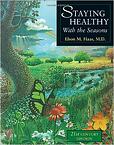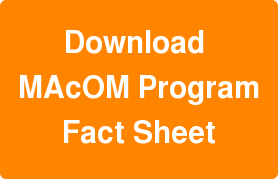
Stepping into the world of traditional Chinese medicine as a student or a patient calls for an openness in acknowledging how tradition and science overlap. Some aspects of traditional Chinese medicine can’t be easily reconciled to a specimen under a microscope, yet the scientific community is increasingly expanding its understanding of how acupuncture and herbal medicine affect the body.
As an intern in the student clinic at AOMA, patients routinely ask why I’m immersed in this field, what the needles are doing, and about this word “qi” that keeps coming up.If you find yourself asking these questions, or are considering a life dedicated to Chinese medical practice, I recommend the following resources to help build your understanding of this medicine before attending acupuncture school.
 1. The Body Electric: Electromagnetism and the Foundation of Life
1. The Body Electric: Electromagnetism and the Foundation of Life
Authors: Robert O Becker, MD, and Gary Seldon
Dr. Robert Becker’s writing offers a somewhat-rare voice from the modern medical community that connects compassionate medical care to scientific theory—a connection resonating with many of those curious about Chinese medicine. An orthopedist, Becker, opens his book with a description of his medical school experiences in crowded wards before the discovery and application of penicillin. Exposed as a student to this widespread suffering, he explores what it means to define pain as an objective and subjective experience. So compels his subsequent lifework researching electromagnetism as it shapes and heals our bodies.

2. Between Heaven and Earth: A Guide to Chinese Medicine
Authors: Harriet Beinfeld, LAc and Efrem Korngold, LAc
This text reads almost like an introductory course in Chinese medicine completely accessible to the Western lay reader. Beinfeld and Korngold describe their watershed introduction to Chinese medicine in the 1970s when it was first being introduced in the US. They quickly go through a stepwise comparison of Eastern and Western approaches providing a readable, informative explanation of Yin-Yang theory, the Taoist Five Phases, and tongue and pulse diagnosis—Chinese medicine concepts fundamental to every beginning student. Rounding out the last chapter is a collection of therapeutic recipes resting on the ubiquitous concept that longevity and vitality require keen understanding of “kitchen alchemy.” Anyone who wants to dive into the world of Chinese medicine through the personal voices of American authors should check out this book.
 3. The Web that Has No Weaver: Understanding Chinese Medicine
3. The Web that Has No Weaver: Understanding Chinese Medicine
Author: Ted Kaptchuk, OMD
Like the previous selection, this book holds a place as a foundational staple for new students and curious patients of Chinese Medicine. The Web, however, dives into detail rapidly, quoting readily from classics in the canon of ancient Chinese medical text. It reads less like a personal narrative and more like a compelling cultural textbook. It moves beyond a basic overview of Taoist theory and digs into richer detail of TCM diagnosis, the zang fu (organ) patterns, and meridian system. This book is best appreciated as a cover-to-cover read, appropriate for someone wants to spend time delving into and ruminating on the broader implications of a life in Chinese medical practice.
 4. Staying Healthy with the Seasons
4. Staying Healthy with the Seasons
Author: Elson M. Haas, M.D.
Many of us who enter the field of Chinese medicine--or merely seek care from an acupuncture and Chinese medical practitioner—appreciate to varying degrees that ancient healing is a life practice and not just a 1-hr session of needles with a bag of medicinal herbs. Staying Healthy with the Seasons fastens a Western life to manageable ancient Eastern practice. It takes the Taoist Five Elements and expands them heartily into a guide for diet, exercise, meditation, and disease prevention. Not only does this book provide great introductory information but also is a bookshelf staple in the homes of wellness-seeking families
 5. The Spark in the Machine: How the Science of Acupuncture Explains the Mysteries of Western Medicine
5. The Spark in the Machine: How the Science of Acupuncture Explains the Mysteries of Western Medicine
Author: Daniel Keown, MD (England)
Dr. Keown commences his book by hitching together a functional definition of qi (“chee”) to the sheet-like bands of tissue under our skin called fascia. He continues in an explanation of how human anatomy develops prenatally, where acupuncture points emerge in this development, and how fully developed meridians course in the mature human body to connect these points. The book uses anatomical references to define more esoteric acupuncture landmarks. Any layperson can pick up this book for a concrete understanding of where and why major points in the body exist. If you have found yourself as an acupuncture patient asking about the where and why of the needling points, definitely check out this text!


